holacracy
description: a method of decentralized management and organizational governance, which claims to distribute authority and decision-making through a holarchy of self-organizing teams rather than being vested in a management hierarchy
21 results
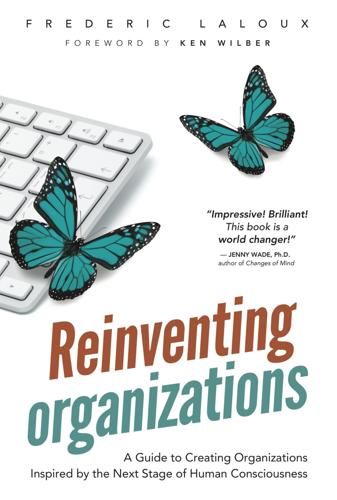
Reinventing Organizations: A Guide to Creating Organizations Inspired by the Next Stage of Human Consciousness
by
Frederic Laloux
and
Ken Wilber
Published 9 Feb 2014
Chapter 2.3: Self-management (practices) 43 Bakke, Joy at Work, 82. 44 Ibid., 98-99. 45 Ibid., 44-45. 46 Ibid., 72. 47 Zobrist, La belle histoire de FAVI, 318. 48 Bakke, Joy at Work, 101-102. 49 Shari Caudron, “Meditation and Mindfulness at Sounds True,” Workforce, June 2001. 50 Gary Hamel, “First, Let’s Fire All the Managers,” Harvard Business Review, December 2011, http://hbr.org/2011/12/first-lets-fire-all-the-managers, accessed April 11, 2012. 51 Ibid. 52 Brian Robertson, “Dialog: The History of Holacracy,” Holacracy Community of Practice, October 2011, www.holacracy.org/resources, accessed Febuary 24, 2012. 53 Ibid. 54 Brian Robertson, interviewed by Jeff Klein, En*theos Radio, “It’s Just Good Business,” March 9, 2012, 2012, http://www.entheos.com/radio/shows/Its-Just-Good-Business, accessed April 12, 2012 55 This minimum set of practices is captured in a document called “Holacracy Constitution,” which can be downloaded from Holacracy’s web site at www.holacracy.org. 56 In Holacracy’s language, I should use the term “circle” and not team.
…
CPP believes it has turned this problem into a strength—out of necessity, the staff has turned autodidacticism into an art form, continuously picking up the latest technical skills to remain state-of-the-art. 68 Hamel, “First, Let’s Fire All the Managers.” 69 Ibid. 70 Brian Robertson, “The Irony of Empowerment,” Holacracy Blogs, October 28, 2010, www.holacracy.org/blog, accessed November 2, 2011. 71 Gary Hamel, What Matters Now (San Francisco: Jossey-Bass, 2012), 176-177. Chapter 2.4: Striving for wholeness (general processes) 72 Brian Robertson, “Holacracy: Empowerment Built In,” Holacracy Blogs, January 16, 2013, www.holacracy.org/blog, accessed January 20, 2013. 73 A similar effect is at play in schools where babies are brought into the classroom. Mary Gordon, a Canadian educator, pioneered a program where mothers (or fathers) and their babies come to spend time with a class of children at regular times.
…
Each system was better than the last, but that didn’t change the impact of “oh my God everything is changing around here continually.”53 In time, from the crazy experimentation was distilled a sophisticated and coherent set of structures and practices that Robertson calls “Holacracy.” When Robertson hired a new management team and exited Ternary Software, he created HolacracyOne, a consulting and training firm dedicated to refining and spreading the practice of Holacracy in organizations. He often uses a computer analogy to explain what Holacracy is about: Think about it as an operating system for an organization. Not a technology, not a piece of software, but a social technology. Your computer has an operating system … [that] controls how communication happens, how power works, how applications share resources and information, the flow of work through that computer.
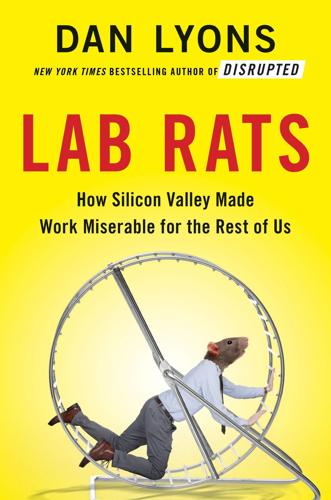
Lab Rats: How Silicon Valley Made Work Miserable for the Rest of Us
by
Dan Lyons
Published 22 Oct 2018
It’s a good rap, and he’s got it down. Robertson first came up with the ideas behind Holacracy and inflicted them on the employees of a software company he had started. Eventually he came to believe that the management methodology was more interesting than the software company, and he decided that instead of selling code he would make a living by teaching people a new way to run companies. Robertson wrote the “Holacracy Constitution” and in 2015 published a book, Holacracy: The New Management System for a Rapidly Changing World. The name holacracy comes from holarchy, a term from a 1967 book, The Ghost in the Machine, by Arthur Koestler, who was trying to figure out how the mind and body are related to each other and posited that humans are composed of things called holons.
…
Then I say, ‘Okay, now can we address one of my tensions.’” Robertson’s company, HolacracyOne, has twenty employees. Robertson has certified fifty Holacracy trainers who work independently. More than one thousand companies have adopted Holacracy. Small pilot programs are running at Dannon, the yogurt company; Ernst & Young, the consultancy; and Starwood, the hotel chain. Robertson admits that the transition to Holacracy can be painful. When Zappos, the online shoe retailer, insisted in 2015 that employees commit to using Holacracy or leave the company, nearly 30 percent walked out. The ones who remained were so unhappy that Zappos fell off the Fortune magazine “Best Places to Work” list, where for years it had been a top company.
…
That sends people looking for a new approach to running organizations. Most CEOs have an intuitive sense that there has to be a better way to run a company. They see Holacracy, and they feel drawn to a new paradigm. It’s more dynamic, more lean, more agile.” It sounds great to be lean and agile. But I suspect that most of these ideas are not going to make any company perform any better. Recently I spoke to a CEO whose predecessor had adopted Holacracy. The first thing the new guy did was throw it all out. “Holacracy,” he says, “is the illusion that the natural state of things is reverse entropy. If you just leave things and people alone, they will become more ordered and efficient.
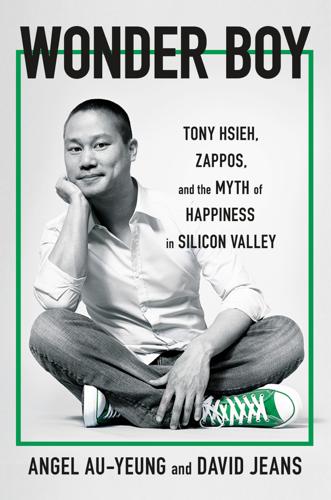
Wonder Boy: Tony Hsieh, Zappos, and the Myth of Happiness in Silicon Valley
by
Angel Au-Yeung
and
David Jeans
Published 25 Apr 2023
Since 2013, an effort had been underway to roll out a new management structure for the Downtown Project that was meant to eliminate job titles and force people to make up their own roles—kind of like a tribe, Tony would say. Holacracy, as this structure was called, would also further remove Tony from the spotlight, and shift responsibility for the neighborhood away from him. “Tony doesn’t really like conflict,” said Maggie Hsu, who was assigned to lead the rollout of the management system at the Downtown Project. “Holacracy was this way to diffuse that because he wasn’t the bad guy or central decision maker.” The concept of Holacracy was created by Brian Robertson, a software developer who had been trying to reduce management decisions at a company he started.
…
“After many conversations and a lot of feedback about where we are today versus our desired state of self-organization, self-management, increased autonomy, and increased efficiency,” he continued, “we are going to take a ‘rip the bandaid’ approach.” In other words, employees either had to adopt Holacracy or take a buyout. Zappos lost 210 out of 1,503 employees over the following months. Some Zapponians had started wondering whether Tony should resign from Zappos. “The brewing employee discontent reflects the paradox at the heart of any company’s move to Holacracy,” read a New York Times story about the debacle. “For all the talk of self-management and consensus building, the decision to go down this path was Mr. Hsieh’s alone.” Tony remained defensive about Holacracy to a press that was unwilling to accept it. “The media has kind of portrayed it as ‘there’s just total chaos,’” he said during an onstage interview with veteran technology reporter Kara Swisher during a conference in early 2016.
…
During the latter half of 2013, Robertson and his consulting team spent weeks holding seminars with Downtown Project employees to school them on how to give up their titles and, seemingly, their designated responsibilities. Robertson’s rules were governed by the Holacracy Constitution, which he made up, and contained language that was more akin to a scientific study than plain English. That was frustrating for the hundreds of people who had better things to do than decipher its nonsense. When conflicts arose, for example, practitioners were expected to engage in an act called “processing tensions,” an act that the Holacracy Constitution defined by the following statement: A Partner duly filling a Role shall regularly compare the current expression of such Role’s Purpose and enactment of its Accountabilities to such Partner’s sense of an ideal potential expression of such Purpose and enactment of such Accountabilities to identify gaps between the current reality and such a sensed potential (each such gap a “Tension”).
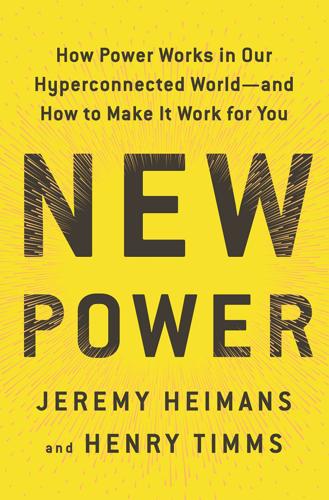
New Power: How Power Works in Our Hyperconnected World--And How to Make It Work for You
by
Jeremy Heimans
and
Henry Timms
Published 2 Apr 2018
BuurtzorgWeb: “Buurtzorg Web,” July 2017. www.buurtzorg.com. “new way of running”: Benjamin Snyder, “Holacracy and 3 of the Most Unusual Management Practices Around,” Fortune, June 2, 2015. “As a Partner assigned”: Holacracy, “Holacracy Constitution,” HolacracyOne, LLC, 2013. www.holacracy.org. “getting in the way of the work”: Aimee Groth, “Zappos Is Struggling with Holacracy Because Humans Aren’t Designed to Operate like Software,” Quartz, December 21, 2016. “It felt like being part of a code”: Julia Culen, “Holacracy: Not Safe Enough to Try,” Medium, June 27, 2015. “During the next year”: Deloitte, “The Future of the Workforce: Critical Drivers and Challenges,” Deloitte, July 2016, 6. https://www2.deloitte.com.
…
You may do this on a case-by-case basis when others request permission to impact one of your Domains, by considering the request and allowing or withholding permission.” Restrictions and protocols, with a good sprinkle of jargon, become the focus under Holacracy, not the work itself. Medium abandoned Holacracy after initially embracing it with gusto, saying it was “getting in the way of the work,” and Holacracy is partly blamed for the departure of an unprecedented nearly one-third of the Zappos workforce in just one year, 2015, and for the company’s being left off Fortune magazine’s annual list of the best places to work for the first time in eight years. Holacracy is like new power for robots. Julia Culen describes her experience when a long-standing Viennese-based consulting firm of which she was a managing partner adopted Holacracy: “It felt like being part of a code…an algorithm that is optimized for machines, but not for humans.
…
It boasts more flexible roles for staff and greater transparency. Holacracy might sound a lot like Buurtzorg, only with better software. It is far from it. In fact, the differences between the two models help us understand the real secret to Buurtzorg’s success, and what the rest of us might try to emulate. Nurses like Madelon and her teams have huge freedom to define their own working methods while Holacracy is highly structured and directive, perhaps more so than many old power organizations. A sample instruction from the forty-page Holacracy constitution reads: “As a Partner assigned to a Role, you have the authority to control and regulate each Domain of your Role.
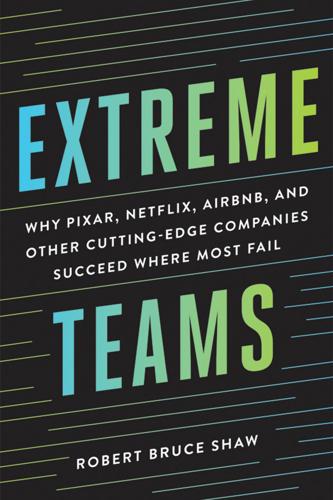
Extreme Teams: Why Pixar, Netflix, AirBnB, and Other Cutting-Edge Companies Succeed Where Most Fail
by
Robert Bruce Shaw
,
James Foster
and
Brilliance Audio
Published 14 Oct 2017
Managers who are unwilling to do so are not hired or don’t remain with the firm. A second example of Zappos being an expression of Hsieh’s thinking involves his dislike of hierarchy. He is now implementing a new organizational approach in Zappos with an emphasis on self-managing teams, called holacracy.17 In the simplest terms, holacracy eliminates most of the authority structures found in traditional firms (including titles). This radical approach is designed to create a company of entrepreneurs who identify and seize opportunities as they arise and, in so doing, help the company operate more effectively. Traditional management roles are replaced by governance groups called “circles.”
…
See Rebecca Keegan, “With ‘Despicable Me 2’ and More, Movies Revisit the Sequel Debate,” Los Angeles Times, July 5, 2013. 16Walt Disney said, “I don’t make movies to make money—I make money to make movies.” Quoted in Hayagreeva Rao, Robert Sutton, and Allen P. Webb, “Innovation Lessons from Pixar: An interview with Oscar-Winning Director Brad Bird,” McKinsey Quarterly, April 2008. 17Steve Denning, “Making Sense of Zappos and Holacracy,” Forbes, January 15, 2014. A more detailed description of the approach can be found at Ethan Bernstein et al., “Beyond the Holacracy Hype,” Harvard Business Review July-August (2016). We will not know for few years if the approach will work at Zappos. My sense is that some elements of it will be retained by the company but it will not survive in its current form due to the complexities of making it work.
…
The leaders also state that the normal turnover in the firm is about 20 percent (indicating the additional turnover in 2015 was only 10 percent). A second reference suggests that 18 percent of the employee population took the company’s buyout offer in 2015, with 6 percent citing holacracy as the reason they were leaving. See Gregory Ferenstein, “The Zappos Exodus Wasn’t About Holacracy, Says Tony Hsieh,” Fast Company, January 19, 2016. Also see David Gelles, “The Zappos Exodus Continues After a Radical Management Experiment,” New York Times, January 13, 2016. 19See Joseph B. Lassiter and Evan Richardson, “Airbnb,” Harvard Business Review, September 28, 2011.

Exponential Organizations: Why New Organizations Are Ten Times Better, Faster, and Cheaper Than Yours (And What to Do About It)
by
Salim Ismail
and
Yuri van Geest
Published 17 Oct 2014
Holacracy (a concept as well as the company’s name) is defined as a social technology or system of organizational governance, in which authority and decision-making are distributed via fractal, self-organizing teams rather than being vested at the top of a hierarchy. The system combines Experimentation, OKRs, openness, transparency and Autonomy. The following table compares traditional organizational characteristics with autonomous organizations like those advocated by Holacracy: Without Holacracy With Holacracy Central control and authority Distributed control and authority Predict and plan for long term Dynamic and flexible: changes can and are constantly occuring Hierarchic structure OR flat, based on consensus Neither, as everyone is the ‘highest authority’ in their own role and ‘follower’ of other roles Interest oriented Core goal oriented Tension as a problem Tension as fuel Reorganization and change management Natural development, evolution and movement Job titles Dynamic roles Heroic leaders, employees and process supervisors Vital people who fulfill their role Organizing people Organizing work Instrumental use of human relationships to serve Organizational goals Clear separation between people, relationships and roles Holacracy is said to increase agility, efficiency, transparency, innovation and accountability within an organization.
…
These hypercritical and demanding consumers can only be satisfied with companies placing their most empowered and proactive employees on the front line. A good example of this trend towards Autonomy is a company called Holacracy, which has taken Agile techniques from the software world and the Lean Startup approach and extended them to all aspects of the organization. Holacracy (a concept as well as the company’s name) is defined as a social technology or system of organizational governance, in which authority and decision-making are distributed via fractal, self-organizing teams rather than being vested at the top of a hierarchy.
…
The following table compares traditional organizational characteristics with autonomous organizations like those advocated by Holacracy: Without Holacracy With Holacracy Central control and authority Distributed control and authority Predict and plan for long term Dynamic and flexible: changes can and are constantly occuring Hierarchic structure OR flat, based on consensus Neither, as everyone is the ‘highest authority’ in their own role and ‘follower’ of other roles Interest oriented Core goal oriented Tension as a problem Tension as fuel Reorganization and change management Natural development, evolution and movement Job titles Dynamic roles Heroic leaders, employees and process supervisors Vital people who fulfill their role Organizing people Organizing work Instrumental use of human relationships to serve Organizational goals Clear separation between people, relationships and roles Holacracy is said to increase agility, efficiency, transparency, innovation and accountability within an organization. The approach encourages individual team members to take initiative and gives them a process by which their concerns or ideas can be addressed. The system of distributed authority also reduces the burden on leaders to make every decision alone.

Everything for Everyone: The Radical Tradition That Is Shaping the Next Economy
by
Nathan Schneider
Published 10 Sep 2018
Inspired by such communities, tech-industry consultants promote new management philosophies with such names as Holacracy, Agile, and Teal.6 These feats of dynamic, distributed workflow seem to outstrip the democracy of most big, established cooperatives nowadays, which tend to have carbon-copied their hierarchies from industrial-age bureaucracies. Techie capitalism can appear to be out-cooperating the co-ops. For instance, Holacracy: borrowing a name from Arthur Koestler’s concept of the holon—“a whole that is part of a larger whole”—it proposes to replace the top-down hierarchy of the industrial corporation with the free flow of an open-source project. There is some hierarchy in Holacracy—officially capitalized, a registered trademark of the company HolacracyOne—but, rather than the metaphor of a pyramid, the system relies on nested “circles.”
…
Rather than a single job description, each worker can hold any number of carefully specified “roles,” within which the worker has authority to make relevant decisions, whether the CEO likes them or not. For bosses used to command-and-control, Holacracy means giving up the power to micromanage. Meetings are short and highly regimented. Rather than mouthing off at will, the people formerly called managers have to trust the process and the code-like rules that define it. The system has been implemented partly or fully in various corners of the tech industry—for instance, at Zappos and Medium—though in investor-oriented settings like these, it has a tendency to implode.7 Maybe the contradictions become too easily apparent. Although Holacracy grants even the lowliest employees autonomy in their domain, that autonomy must always accord with the rules of the game, with the overriding purpose of the company.
…
Although Holacracy grants even the lowliest employees autonomy in their domain, that autonomy must always accord with the rules of the game, with the overriding purpose of the company. The purpose is everything in Holacracy. And, for most sizable tech companies, that purpose is to furnish wealth for investors. Self-determination gets dangled before people but then yanked away as soon as it might really matter. Despite tech culture’s clever hacks of intellectual-property law and organizational charts, it has left the basic accountability of the firm mostly unscathed—in particular, its ownership structure and its profits. Companies have exhibited some cooperative tendencies in their use of employee stock options to lure talent to early startups, and this has meant windfalls for some, but investor control takes over before long.

Blockchain Revolution: How the Technology Behind Bitcoin Is Changing Money, Business, and the World
by
Don Tapscott
and
Alex Tapscott
Published 9 May 2016
Our story of ConsenSys is not so much about its ambitious blockchain-based products or services. It’s about its efforts to cultivate a company of its own, pioneering important new ground in management science along the lines of holacracy, a collaborative rather than hierarchical process for defining and aligning the work to be done. “While I don’t want us to implement holacracy as is—it feels way too rigid and structured to me—we are working to incorporate many of its philosophies in our structure and processes,” said Lubin. Among those holacratic tenets are “dynamic roles rather than traditional job descriptions; distributed, not delegated authority; transparent rules rather than office politics; and rapid reiterations rather than big reorganizations,” all of which describe how blockchain technologies work.
…
Edella Schlarger and Elinor Ostrom, “Property-Rights Regimes and Natural Resources: A Conceptual Analysis,” Land Economics 68(3) (August 1992): 249–62; www.jstor.org/stable/3146375. 47. Interview with Haluk Kulin, June 9, 2015. 48. John Paul Titlow, “Fire Your Boss: Holacracy’s Founder on the Flatter Future of Work,” Fast Company, Mansueto Ventures LLC, July 9, 2015; www.fastcompany.com/3048338/the-future-of-work/fire-your-boss-holacracys-founder-on-the-flatter-future-of-work. 49. World Bank, September 2, 2015; www.worldbank.org/en/news/press-release/2015/04/15/massive-drop-in-number-of-unbanked-says-new-report. 50. “Bitcoin Powers New Worldwide Cellphone Top-Up Service,” CoinDesk, February 15, 2015; www.coindesk.com/bitcoin-powers-new-worldwide-cellphone-top-service/, accessed August 26, 2015.
…
“The blockchain provides us a whole group of people who are both mission-aligned and technology-aligned to create different ways that enterprises can leverage these unique data sets rather than protect their data silos.”47 Simply put, people create better data than what a company can frack from them, and consumers are much better at emotionally aligning with brands and influencing their peers than companies are. Implications for the Blockchain Economy: As an economic design principle, enforcing rights must start with clarifying rights. In the field of management science, the holacracy movement is an interesting, if not controversial, example of how members of organizations are defining the work that needs to be done and then assigning rights and the responsibility to do this work as part of a whole.48 Who did we agree should have this set of decisions and activities at our company?
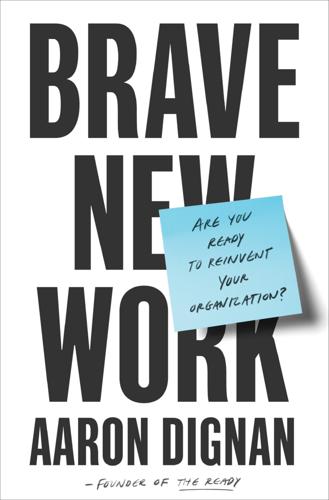
Brave New Work: Are You Ready to Reinvent Your Organization?
by
Aaron Dignan
Published 1 Feb 2019
It’s a piece of the puzzle, not the whole thing. It is necessary but not sufficient. It turns out agility isn’t an anomaly in this way. Many management innovations have emerged in the last half century, each promising to revolutionize work as we know it. Lean Manufacturing. Total Quality Management. ISO 9000. Six Sigma. Sociocracy. Holacracy. The Lean Startup. The list goes on and on. Each was, in its own way, a piece of an operating system. Some were misguided from the start. Others became perversions of themselves over time. And a few offered real wisdom that is yet to be fully realized. Thich Nhat Hanh wrote in Old Path White Clouds, “A finger pointing at the moon is not the moon.”
…
Interestingly, in Sociocracy members may consent to using other methods of decision making, including distributing authority to specific roles, teams, or elected representatives, provided they consent to the method itself. The process he developed has been refined over the years by practitioners of Sociocracy and was reintroduced in a more structured form by the creators of Holacracy as Integrative Decision Making or IDM. IDM contains a series of “rounds” that act as an algorithm for processing a proposal. Above all, the method prioritizes inclusion and forward momentum. The final round is the breakthrough: someone who objects to a proposal cannot simply veto it but must try to shape it further to make it safe to try.
…
One way to do this is to encourage every team to hold a monthly governance meeting. The goal of this meeting is for everyone to have the chance to voice their concerns and propose local changes to structure, strategy, resources . . . anything that will help the organization pursue its purpose. Thousands of organizations around the world that practice Sociocracy, Holacracy, or other forms of participatory governance are doing this today. Imagine every team in your organization continuously and deliberately tweaking, not just your products and services but the organization itself. Meetings in Action Facilitators and Scribes. One of the best ways to increase meeting effectiveness is to ensure that someone is responsible for the structure, flow, and output of every meeting.

Intertwingled: Information Changes Everything
by
Peter Morville
Published 14 May 2014
There’s more than one way to classify a cat. Once that door of perception is open, we can nudge ourselves and our colleagues towards celebrating both difference and similarity. The org chart is a place to start. Is the hierarchy reinforcing the unhealthy division of disciplines? Might a “holacracy” of self-organizing, multi-disciplinary, cross-functional teams work better?xliv In holacracy, authority and decision-making are distributed, and members can be in more than one circle. Zappos and Medium are giving it a try. Maybe we should too. Once the org chart’s okay, layout is a lever worth a pull. Where we sit relative to our colleagues can unlock creativity and drive collaboration.
…
xxxix Fundamentals of Language by Roman Jakobson and Morris Halle (1956), p.60. xl Semiotics: The Basics by Daniel Chandler (2002), p.111. xli Conversion, Culture, and Cognitive Categories by Paul G. Hiebert (1978). xlii Centered and Bounded Sets by Dan Klyn (2012). xliii Life of Pi by Yann Martel (2003), p.66. xliv To learn more about holacracy, see holacracy.org. xlv The Death and Life of Great American Cities by Jane Jacobs (1961), p.392. xlvi The New Library Patron by Lee Rainie (2013). xlvii The Timeless Way of Building by Christopher Alexander (1979). xlviii The Battle for the Life and Beauty of the Earth by Christopher Alexander, Hans Joachim Neis, and Maggie Moore Alexander (2012), p.115.
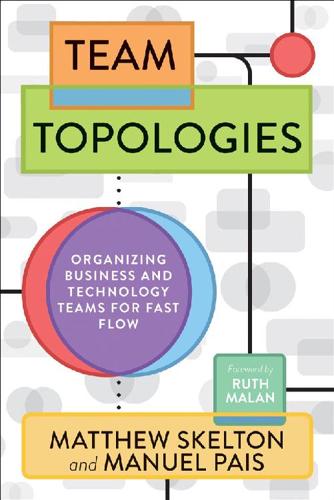
Team Topologies: Organizing Business and Technology Teams for Fast Flow
by
Matthew Skelton
and
Manuel Pais
Published 16 Sep 2019
“The Dunbar Number, From the Guru of Social Networks.” Bloomberg.com, January 11, 2013. http://www.bloomberg.com/news/articles/2013-01-10/the-dunbar-number-from-the-guru-of-social-networks. Bernstein, Ethan, John Bunch, Niko Canner, and Michael Lee. “Beyond the Holacracy Hype.” Harvard Business Review, July 1, 2016. https://hbr.org/2016/07/beyond-the-holacracy-hype. Bernstein, Ethan, Jesse Shore, and David Lazer. “How Intermittent Breaks in Interaction Improve Collective Intelligence.” Proceedings of the National Academy of Sciences 115 no. 35 (August, 2018): 8734–8739. https://doi.org/10.1073/pnas.1802407115.
…
Niels Pflaeging, author of Organize for Complexity, identifies not one but three different organizational structures in every organization:2 Formal structure (the org chart)—facilitates compliance Informal structure—the “realm of influence” between individuals Value creation structure—how work actually gets done based on inter-personal and inter-team reputation Pflaeging suggests that the key to successful knowledge work organizations is in the interactions between the informal structure and the value creation structure (that is, the interactions between people and teams).3 Other authors have proposed similar characterizations, such as Frédéric Laloux in Reinventing Organizations or Brian Robertson’s Holacracy approach.4 The Team Topologies approach acknowledges the importance of informal and value creation structures as defined by Pflaeging. By empowering teams, and treating them as fundamental building blocks, individuals inside those teams move closer together to act as a team rather than just a group of people.
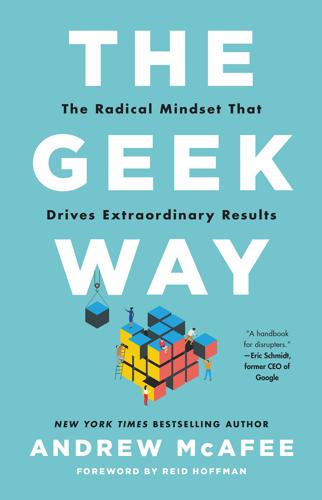
The Geek Way: The Radical Mindset That Drives Extraordinary Results
by
Andrew McAfee
Published 14 Nov 2023
It’s clear to me how my work fits in with the overall strategy and goals of the company. Footnotes 1 In late 2013 the online shoe retailer Zappos began experimenting with holacracy, a management system that did away with hierarchy and well-defined management roles in favor of “distributed authority.” It was not universally popular. When CEO Tony Hsieh announced in March 2015 that all employees would have to fully commit to the new system, 18 percent of the workforce instead took a buyout. In January 2000, the Quartz website announced that “Zappos has quietly backed away from holacracy.” 2 Ford was the second-largest company in America, which was by far the largest economy in the world, having grown by more than 50 percent during World War II while most other large countries’ productive capacities were ravaged by the conflict.
…
Chapter 5: Ownership 1 discussed on the CIA’s website: “The Art of Simple Sabotage,” Central Intelligence Agency, April 1, 2019, www.cia.gov/stories/story/the-art-of-simple-sabotage/. 2 “The consultants were available now”: Reed Hastings and Erin Meyer, No Rules Rules: Netflix and the Culture of Reinvention (New York: Penguin Press, 2020), 66–67. 3 “specific form of organization”: Bert Rockman, “Bureaucracy,” Britannica, accessed January 6, 2023, www.britannica.com/topic/bureaucracy. 4 “However many people complain”: “Max Weber Quotations,” QuoteTab, accessed February 15, 2023, www.quotetab.com/quotes/by-max-weber. 5 survey on bureaucracy: Gary Hamel and Michele Zanini, “What We Learned About Bureaucracy from 7,000 HBR Readers,” Harvard Business Review, August 10, 2017, https://hbr.org/2017/08/what-we-learned-about-bureaucracy-from-7000-hbr-readers. 6 18 percent of the workforce: Jena McGregor, “Zappos Says 18 Percent of the Company Has Left Following Its Radical ‘No Bosses’ Approach,” Washington Post, January 14, 2016, https://www.washingtonpost.com/news/on-leadership/wp/2016/01/14/zappos-says-18-percent-of-the-company-has-left-following-its-radical-no-bosses-approach/. 7 “quietly backed away”: Aimee Groth, “Zappos Has Quietly Backed Away from Holacracy,” Quartz, January 29, 2020, https://qz.com/work/1776841/zappos-has-quietly-backed-away-from-holacracy. 8 “promiscuous distribution”: Lawrence H. Summers, “Why Americans Don’t Trust Government,” Washington Post, May 26, 2016, www.washingtonpost.com/news/wonk/wp/2016/05/26/why-americans-dont-trust-government/. 9 vetocracies: Ezra Klein, “Francis Fukuyama: America Is in ‘One of the Most Severe Political Crises I Have Experienced,’” Vox, October 26, 2016, www.vox.com/2016/10/26/13352946/francis-fukuyama-ezra-klein. 10 40 percent faster than the American economy: “Reg Stats,” Regulatory Studies Center, Trachtenberg School of Public Policy and Public Administration, Columbian College of Arts and Sciences, George Washington University, accessed February 15, 2023, https://regulatorystudies.columbian.gwu.edu/reg-stats. 11 relatively minor repairs: Summers, “Why Americans Don’t Trust Government.” 12 buying Ferrari outright: Angus MacKenzie, “What if Ford Had Bought Ferrari?

Rethinking Money: How New Currencies Turn Scarcity Into Prosperity
by
Bernard Lietaer
and
Jacqui Dunne
Published 4 Feb 2013
One can be a lowly farmer toiling on the lands of the Ngong Hill in Kenya or be pushing a broom in some sweatshop in Shanghai, have Governance and We, the Citizens 191 little or no formal education, and be truly wise. The corollary to that also stands. A modern governance system, although very different, reflecting the fractal nature of the Balinese system, is holacracy. Its structure and procedures integrate the collective wisdom of people while aligning a venture, network, or business with its “broader purpose and a more organic way of operating and the result is dramatically increased agility, transparency, innovation, and accountability.”10 DEMOCRACY, TRANSPARENCY, AND ACCOUNTABILITY The key aspects of the Balinese cooperative currency system— democratic governance, transparency, and accountability—are clearly necessary conditions for a cooperative currency to succeed over time.
…
Other types of trading coins and brass gongs have been discovered in Bali, some of which originate from the Dong Son culture of Vietnam in the 4th century ad. 6. Stephen DeMeulenaere, interview with Jacqui Dunne, January 2, 2012. 7. Ibid. 238 NOTES 8. Hildred Geertz and Clifford Geertz, Kinship in Bali (Chicago: University of Chicago Press, 1978). 9. DeMeulenaere, interview, December 2, 2011. 10. See www.holacracy.com. 11. Margrit Kennedy, interview with Jacqui Dunne, June 1, 2012. 12. See www.regiogeld.de. 13. Dee Hock, One from Many: VISA and the Rise of Chaordic Organization (San Francisco, CA: Berrett-Koehler, 2005). 14. John Boik, interview with Jacqui Dunne, May 30, 2012. 15. John Boik, “Creating Sustainable Societies: The Rebirth of Democracy and Local Economies,” 2012. www.creatingsustainablesocieties.com. 16.
…
See Trash Garden, 151, 161 Geuro, 149 GI Bill, 153 Gift, 47– 49, 82 Glass-Steagall Act, 69–70 Globalization, 86, 221 Global Trading Network, 182–183 Golden ghetto, 19 Gold standard, 24–26; Free Lakota Bank and, 113; homogeneity and, 65– 66; as reference currency, 140; Terra and, 135; in Utah, 201; in Weimar Republic, 236n10 INDEX Goodwill: in Friendly Favors, 132–133; TimeBank and, 82 Google, 200 Google Wallet, 115–116 Government Accountability Office (GAO), 170–171 Government debt, 42– 43, 70, 145–147, 227n21 Gramm-Leach-Bliley Act, 70 Great Depression, 24, 175, 180–181; GDP and, 35; GNP and, 33– 34; WIR and, 99, 102 Greece, 149 Greed, 4 Green products, 152, 186 Greenwashing, 198 Gross domestic product (GDP), 34– 35, 131, 146 Gross National Happiness, 131 Gross national product (GNP), 33– 35 Growth pressure, 2, 42– 43, 52– 53 Happy Futures Global Challenge, 131 Hate group, 182 Health care, 14, 16; free clinic, 162–165; in Mae Hong Son, 205 Helplessness, 17 High-powered money, 40 Hitler, Adolf, 180, 236n10 Holacracy, 191 Homogeneity, 65– 66, 86 Honey, 130–131 HOURS, 162–165, 163 Housing: buying, 110–111, 142–143; improvised, 141 Hubbee, 130–131 Hub Network, 130–131 Human construct, 2, 13, 217 Human right, 49 Human Right, A, 165–166 Hyperinflation, 70, 176, 178–179 ICCO, 105 Identity, 19 Immediacy. See Short-termism Immigration, 156 Income, 51, 108 255 Industrial Age, 2, 15, 203; Information Age and, 120; Third Industrial Revolution, 218; values, 28 Inflation, 91– 93; of creditos, 184–185; hyperinflation, 70, 176, 178–179 Information Age, 50, 120, 201 Infrastructure, 15, 20–21, 103, 194 Inheritance, 18 Innernet, 223 InspirePay, 116 Instability, 134 Insurance, 114, 121–122, 216 Interconnectivity, 32, 62 Interest, 37– 42; bankruptcy and, 39, 41; competition and, 37– 40; compound, 42– 43; JAK and, 110; regio and, 191; scarcity and, 37– 40; short-termism and, 45– 46, 52– 53, 85– 86; wealth transfer via, 49– 50; WIR and, 99–100 Intergenerational thinking, 44 Intern, 16–17, 120 International Architecture Exhibition, 85 International Monetary Fund (IMF), 144, 182, 184 International reserve currency, 57– 58 Internet: community, 57– 58; technologies, 115–116.

New Laws of Robotics: Defending Human Expertise in the Age of AI
by
Frank Pasquale
Published 14 May 2020
You only create incentives for the boss to replace you with software. Electricity and replacement parts are a lot cheaper than food and medicine. Advances in software and robotics have been so rapid that they even raise questions about the replaceability of bosses themselves. Zappos has experimented with “holacracy,” a flat-management style that leaves workers to self-organize their tasks.97 The Harvard Business Review has repeatedly celebrated the “automation of management.”98 Apps like Uber’s delegate management to a code layer, which connects riders with drivers. Bad drivers are no longer fired but “deactivated” by an algorithmic scoring tool.99 Perhaps higher-level executives could find their own work ranked, rated, and ultimately completed by AI.
…
Ernesto Caivano, Settlements, Selected Works 2002–2013 (New York: Pioneer Works Gallery, 2013). 94. David Edward, Artscience: Creativity in the Post-Google Generation (Cambridge, MA: Harvard University Press, 2010). 95. Ernesto Caivano, Settlements, 40–53. 96. Hartmut Rosa, The Social Acceleration of Time (New York: Columbia University Press, 2013). 97. Brian J. Robertson, Holacracy: The New Management System for a Rapidly Changing World (New York: Holt, 2015). 98. Katherine Barr, “AI Is Getting Good Enough to Delegate the Work It Can’t Do,” Harvard Business Review, May 12, 2015, https://hbr.org/2015/05/ai-is-getting-good-enough-to-delegate-the-work-it-cant-do. 99. Alex Rosenblat and Luke Stark, “Algorithmic Labor and Information Asymmetries: A Case Study of Uber’s Drivers,” International Journal of Communication 10 (2016): 3758–3784; but see also Alison Griswold, “Uber Drivers Fired in New York Can Now Appeal Before a Panel of Their Peers,” Quartz, November 23, 2016, https://qz.com/843967/uber-drivers-fired-in-new-york-can-now-appeal-before-a-panel-of-their-peers/. 100.

Co-Intelligence: Living and Working With AI
by
Ethan Mollick
Published 2 Apr 2024
His system was so successful that it revolutionized the manufacturing industry, creating economies of scale and scope and enabling mass consumption and customization. The internet marked another new set of technologies to organize and control work, which is why we have seen the emergence of new systems of work organization and management in recent decades, such as agile software development, lean manufacturing, holacracy, and self-managing teams. Enabled by waves of tools ranging from email to complex enterprise software, these management trends took new, data-driven approaches to organizing. But, like all work before, they still rely on human capabilities and limitations. Human attention remains finite, our emotions are still important, and workers still need bathroom breaks.

Ours to Hack and to Own: The Rise of Platform Cooperativism, a New Vision for the Future of Work and a Fairer Internet
by
Trebor Scholz
and
Nathan Schneider
Published 14 Aug 2017
Members’ voices are easily lost if they are primarily expressed through the election of a board that meets infrequently and is not very tuned in to the day-to-day work. In a staff trusteeship cooperative, every staff person becomes a point of accountability for the organization, taking on responsibility to listen to and amplify the voices of its members. Staff self-manage using an internal governance and operational model such as Holacracy or sociocracy, which distribute power among staff, removing inefficient hierarchies and ensuring a great deal of agency for each staff member. In a staff trusteeship cooperative, the board of directors is still elected, but it takes on a role that is more akin to that of a guardian, overseeing the activities of the organization and ensuring that the staff are tuning in to members in every possible way.

Confessions of a Crypto Millionaire: My Unlikely Escape From Corporate America
by
Dan Conway
Published 8 Sep 2019
There in the distance, talking to a crowd of Chinese provincial bureaucrats, was a kindred spirit and one of my heroes, Andrew Keys, the chief evangelist of ConsenSys in Brooklyn. I’d heard him interviewed on a bunch of podcasts. I was a big fan of his company. For an ETH freak like me, ConsenSys was the hippest, edgiest, most profoundly cool company in the world. They called themselves an Ethereum Production Studio, and they ran the company as a holacracy, meaning it was structured as a flat organization, unlike a traditional corporation. Its founder, Joseph Lubin, was an early disciple of Ethereum and a mentor to Vitalik on the business side. He was a co-founder who helped Vitalik get the word out and attract developers to Ethereum after it launched in 2015.

The Internet Is Not the Answer
by
Andrew Keen
Published 5 Jan 2015
But, like Google, Amazon is also massively investing in automated labor technology, with Jeff Bezos telling his investors in May 2014 that he expected to be using 10,000 robots in its fulfillment centers by the beginning of 2015.34 Thus in 2012 Amazon paid $775 million for Kiva Systems, a maker of robots for servicing warehouses. Kiva robots—which, by the way, are already being used by the Amazon-owned online shoe store Zappos (in Zappos’s hierarchy-free holacracy, all robots are presumably equal)—can retrieve and pick 200–400 items an hour. As George Packer warns in a 2014 New Yorker piece, “Amazon’s warehouse jobs are gradually being taken over by robots.” The chilling end result, Packer forecasts, is that Amazon will have “eliminated the human factor from shopping, and we will finally be all alone with our purchases.”35 The Everything Store is, in truth, turning out to be the nobody store.

Lurking: How a Person Became a User
by
Joanne McNeil
Published 25 Feb 2020
TechCrunch, ordinarily a Silicon Valley cheerleading rag, and seldom one to rock the boat, published a remarkably sympathetic piece documenting the abuse she experienced at the company, concluding that the “situation has greater import than a single person’s struggle: Horvath’s story is a tale of what many underrepresented groups feel and experience in the tech sector.” The story of Horvath’s exit had a long media cycle, including coverage in publications rarely concerned with Silicon Valley or its products at the time. Readers outside the tech industry learned about GitHub’s bizarre policy of “holacracy,” the so-called decentralized management structure that is a clusterfuck in practice, where no one is responsible for anything and everyone is responsible for everything. Few reporters could resist a jab at GitHub HQ’s replica of the White House Oval Office, complete with a circular carpet emblazoned with the words “The United Meritocracy of GitHub” (the company’s gift to itself after a one-hundred-million-dollar investment from Andreessen Horowitz).
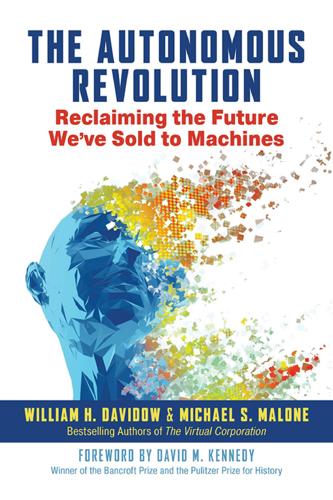
The Autonomous Revolution: Reclaiming the Future We’ve Sold to Machines
by
William Davidow
and
Michael Malone
Published 18 Feb 2020
,” Slate, November 14, 2013, http://www.slate.com/blogs/business_insider/2013/11/14/facebook_s_1_billion_instagram_buy_did_kevin_systrom_sell_too_soon.html (accessed June 27, 2019). 66. Adam Lashinsky, “Why Amazon Tolerates Zappos’ Extreme Management Experiment,” Fortune, March 4, 2016, https://fortune.com/2016/03/04/amazon-zappos-holacracy/; and Andrew Ross Sorkin and Jeremy W. Peters, “Google to Acquire YouTube for $1.65 Billion,” New York Times, October 9, 2006, https://www.nytimes.com/2006/10/09/business/09cnd-deal.html. 67. Ben Casselman, “A Start-Up Slump Is a Drag on the Economy. Big Business May Be to Blame,” New York Times, September 20, 2017, https://www.nytimes.com/2017/09/20/business/economy/startup-business.html?
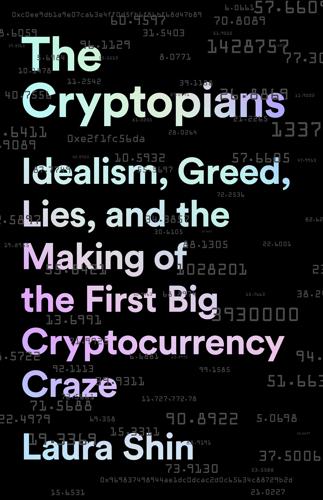
The Cryptopians: Idealism, Greed, Lies, and the Making of the First Big Cryptocurrency Craze
by
Laura Shin
Published 22 Feb 2022
Sam denies there was a company shaman, though in 2018 she signed up for a developer technology event in New York with ConsenSys as her affiliation. In June 2019, she was diagnosed with stage 4 cancer and died in March 2020.) Joe and the senior managers had eschewed a hierarchy, instead promoting a decentralized holacracy (dubbed within ConsenSys as a “meshocracy”), in which people would “self-organize” efficiently.30 One staffer concluded this was a euphemism for anarchy. Another team lead recalled how Human Resources would ask him to review people on his team, and half of them would be people who had left ConsenSys two years prior.